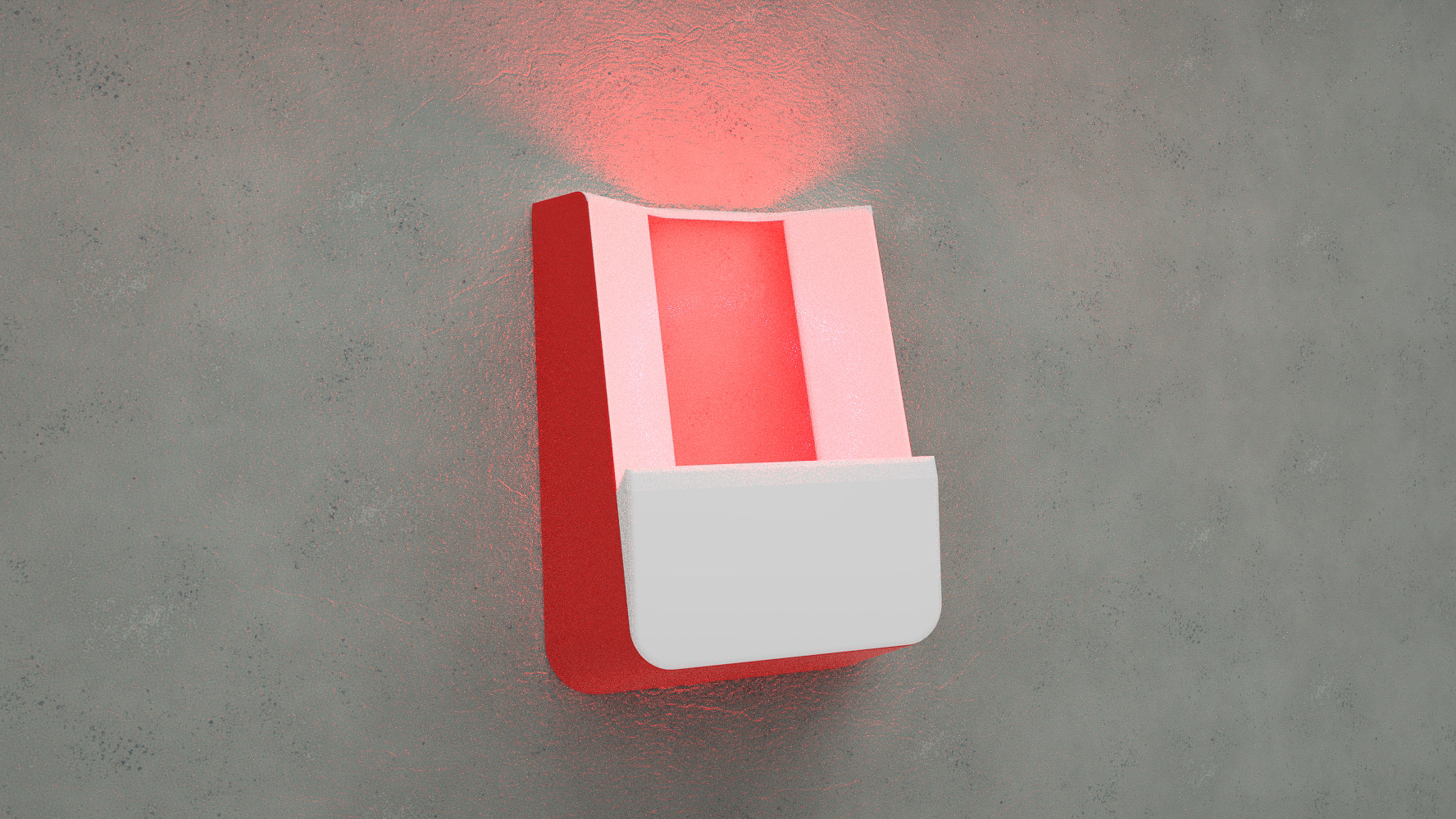
Machine Shop
Fire Alarm
Designing objects that expresses it’s interaction purpose and functionality through its formal language and features.
4 weeks
Industrial Design, User Research, Rapid Prototyping, Human Factors and Ergonomics
SolidWorks, Keyshot, IdeaMaker, FDM Printing, Laser Cutting, Sandblasting, Soldering and Circuitry
4 weeks
Industrial Design, User Research, Rapid Prototyping, Human Factors and Ergonomics
SolidWorks, Keyshot, IdeaMaker, FDM Printing, Laser Cutting, Sandblasting, Soldering and Circuitry
The goal is not to re-invent the fire alarm system, but rather to look at the infrustructure and processes that are already in place, their shortcomings and improving that experience in the context of a busy, and dangerous, shop environment.
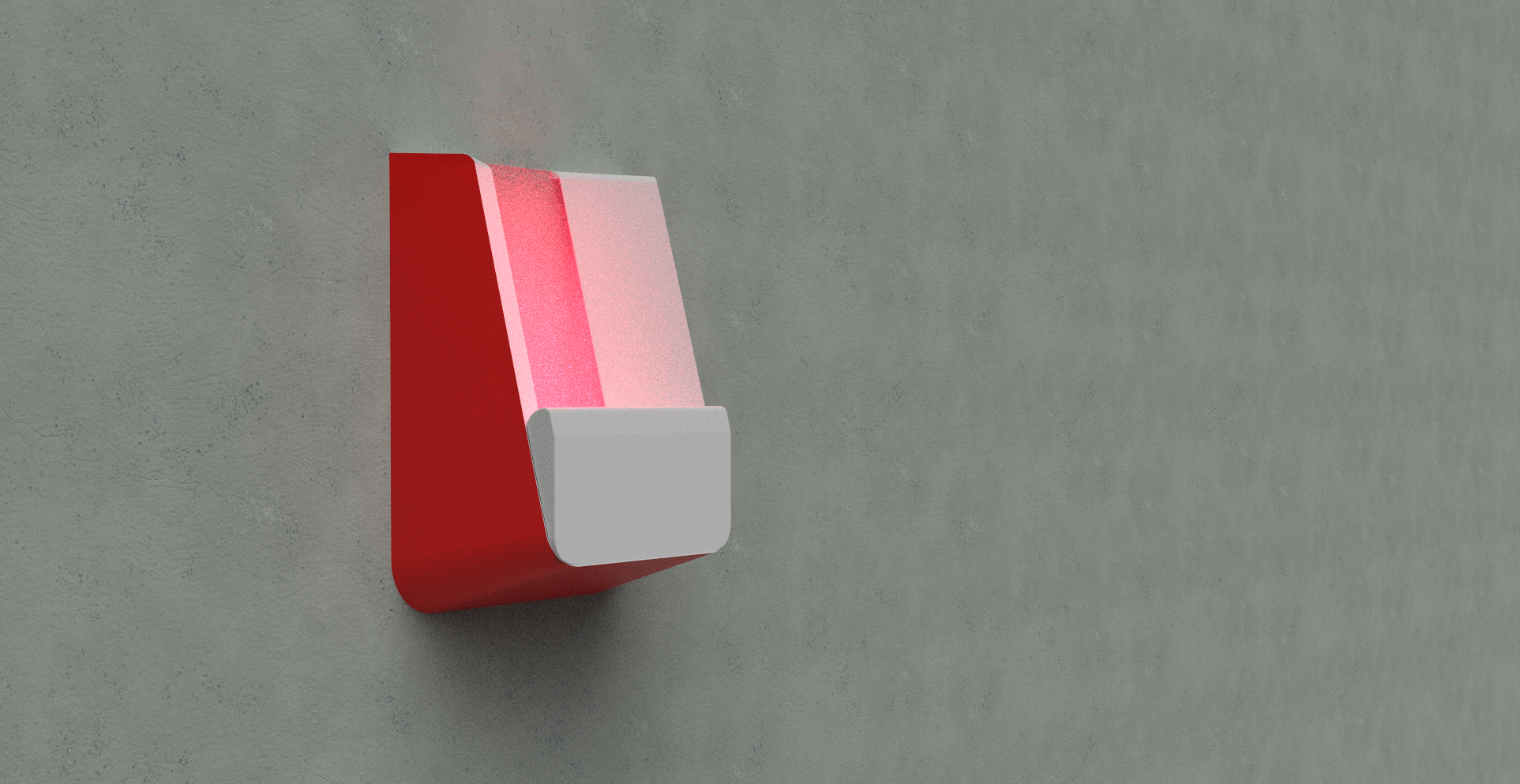
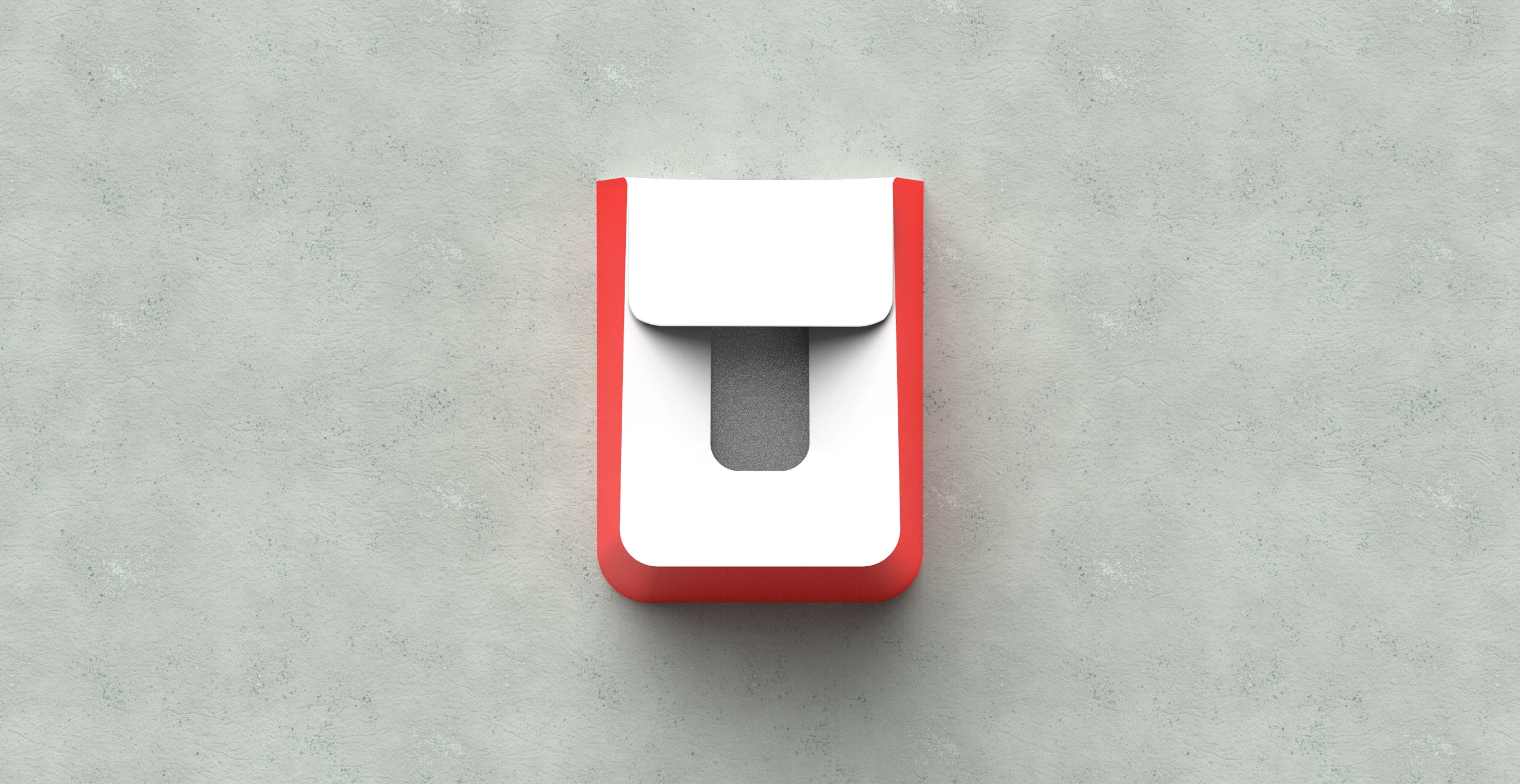
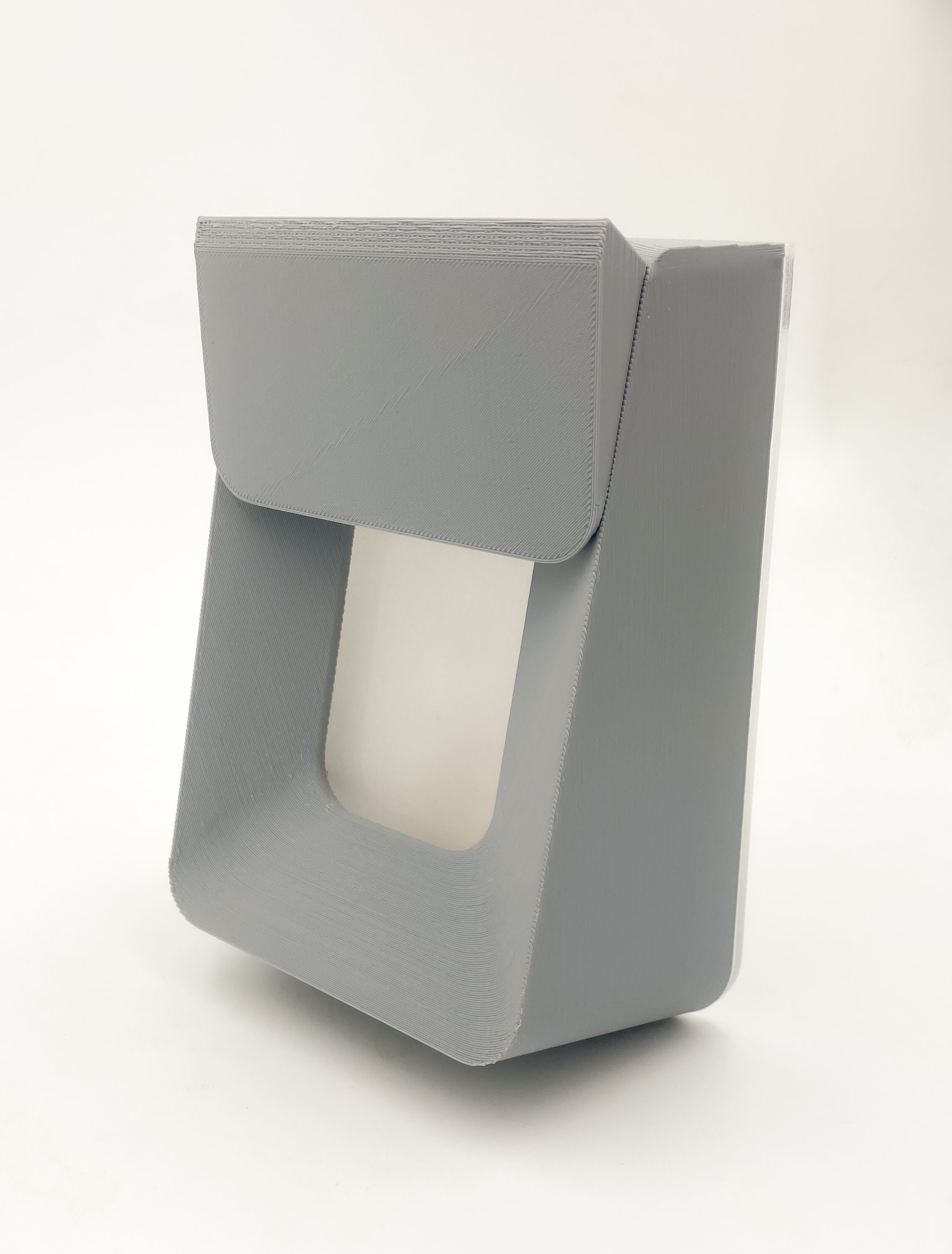
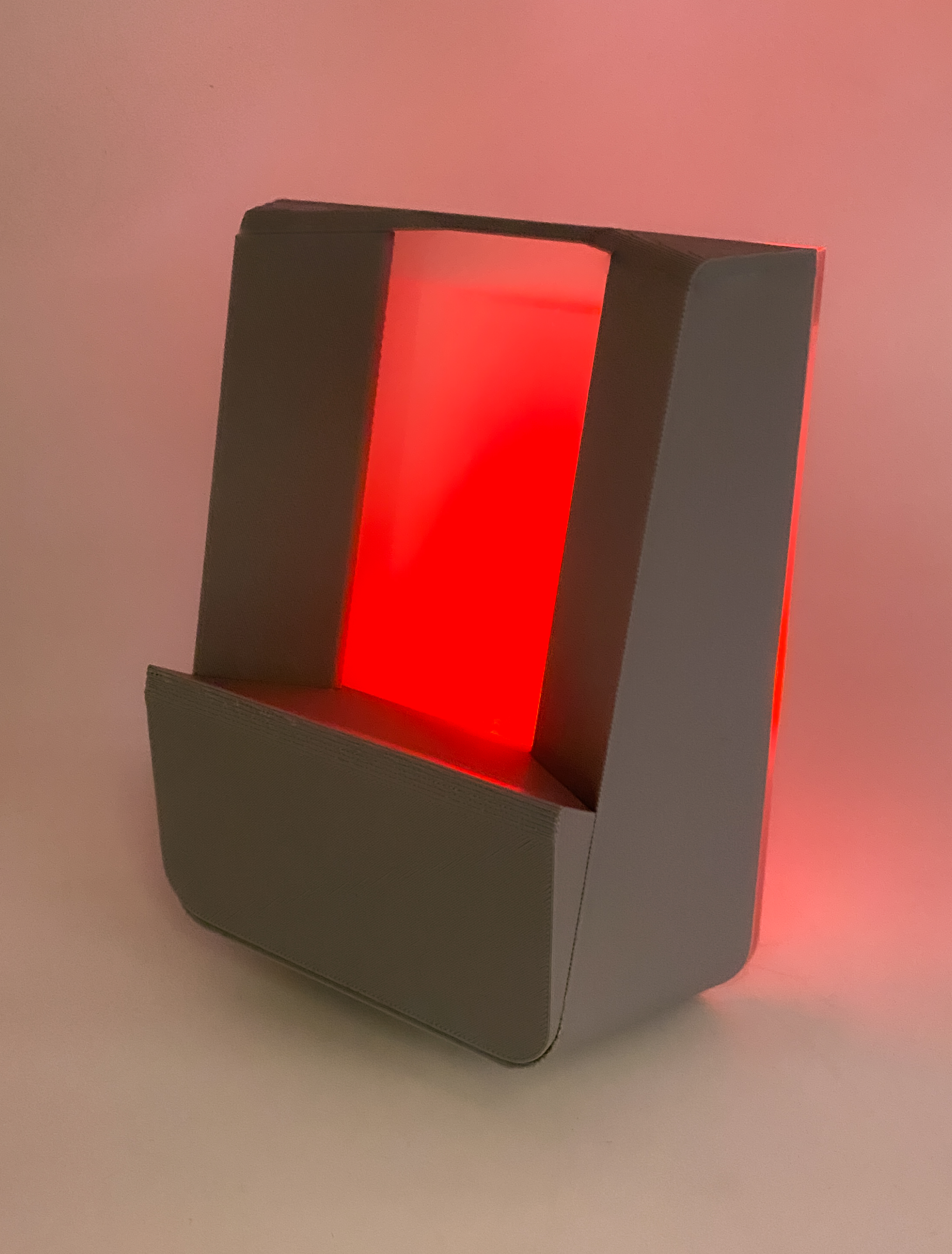

Why focus on machine shops?
My experience working in the School of Design, and CMR shops sparked the idea for the need for a better fire system in these highly dangerous spaces.
Machine shops, and work garages are often very noisy spaces, both visually and auditorally. There’re people scattered around large open rooms filled with machinery and work spaces that are difficult to navigate around.
Often, the work also requires precautionary safety measures in order to protect one from harmful chemicals and power tools. Sight and sound are particularly desensitised as safety goggles, masks and earmuffs are put on. Furthermore, gloves, different materials that may be on the gloves, and different layers of safety fabrics are factors that may limit the mobility of someone in this space needing to alert others of a fire.
My experience working in the School of Design, and CMR shops sparked the idea for the need for a better fire system in these highly dangerous spaces.
Machine shops, and work garages are often very noisy spaces, both visually and auditorally. There’re people scattered around large open rooms filled with machinery and work spaces that are difficult to navigate around.
Often, the work also requires precautionary safety measures in order to protect one from harmful chemicals and power tools. Sight and sound are particularly desensitised as safety goggles, masks and earmuffs are put on. Furthermore, gloves, different materials that may be on the gloves, and different layers of safety fabrics are factors that may limit the mobility of someone in this space needing to alert others of a fire.
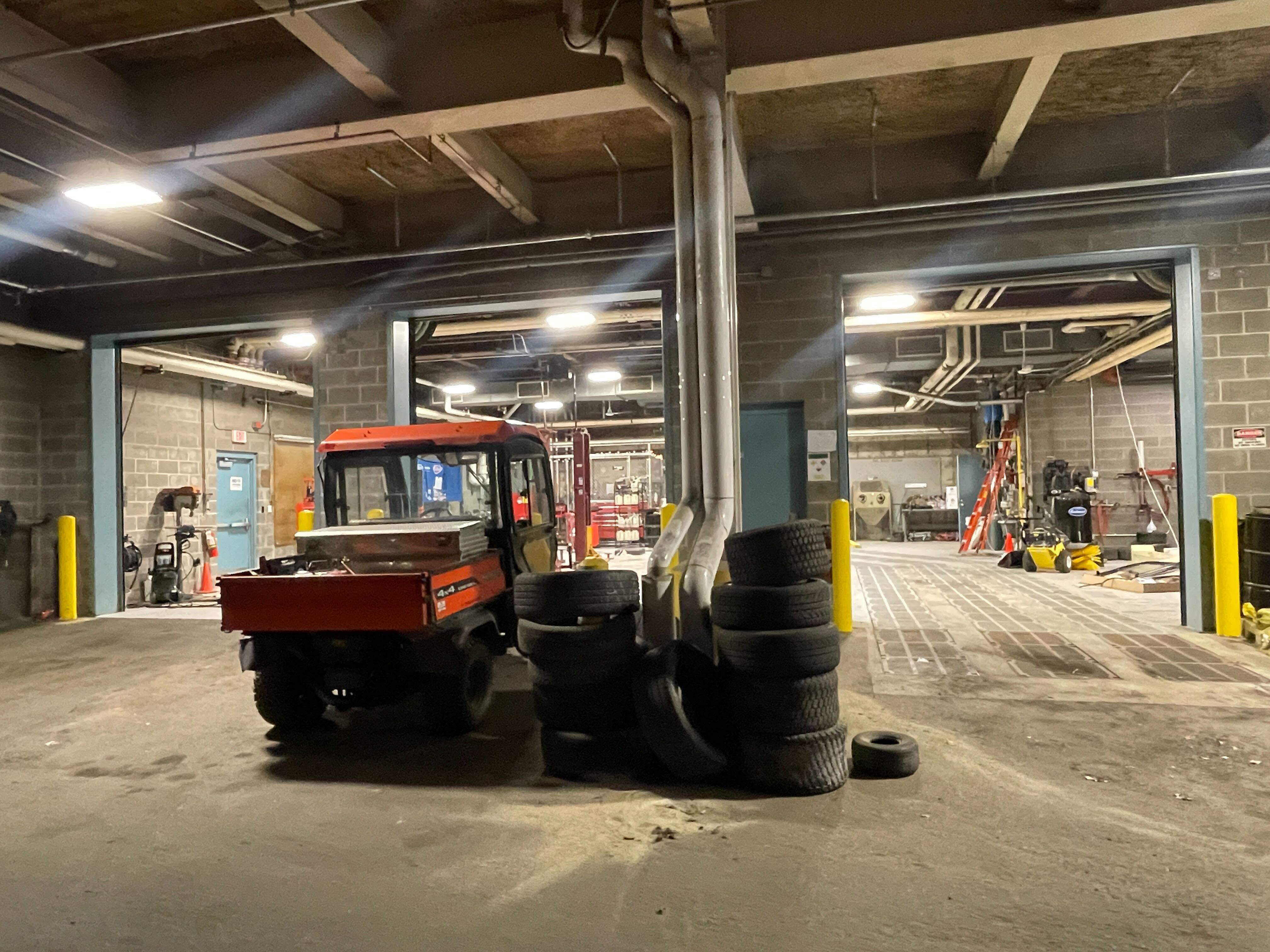

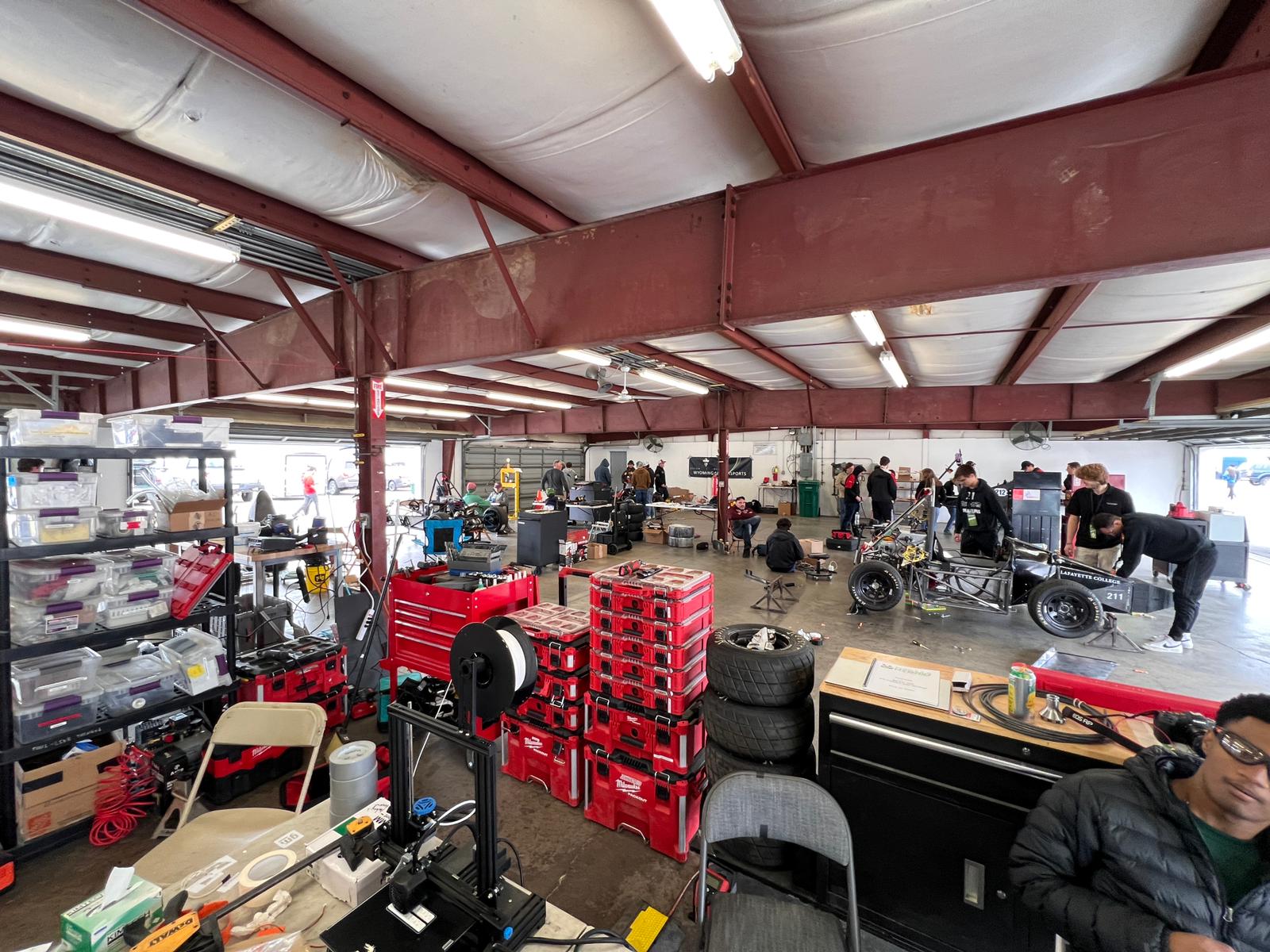
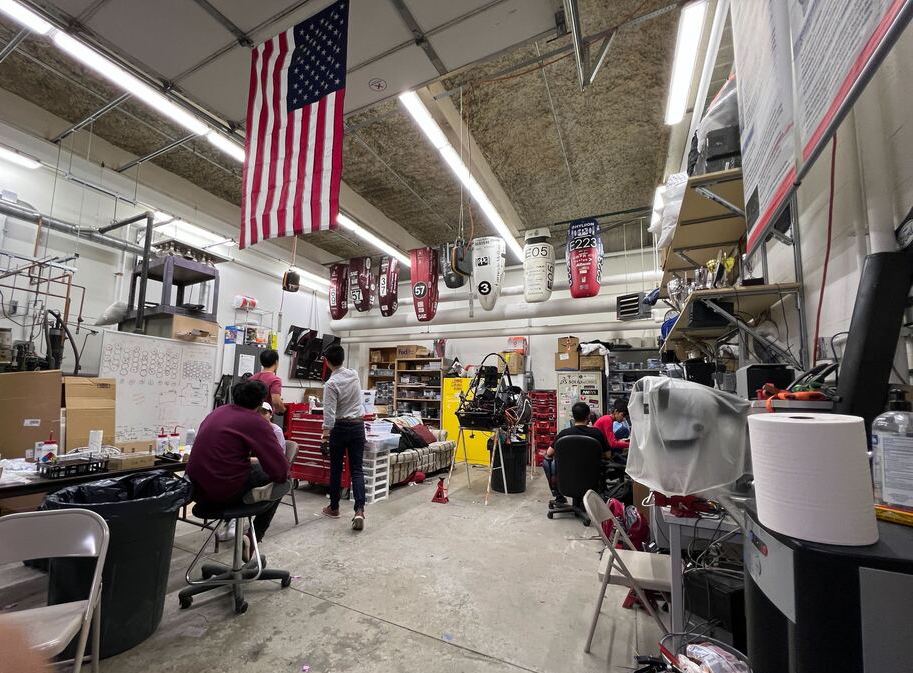
Taking a look at current fire alarms
Current firealarms put in these spaces are small, and require a certain amount of precision to activate, which might not always be possible for someone wearing gloves or a face sheild for example.
They also tend to be predominantly red, as associated with danger and attention grabbing. However, a lot of shops are often filled with red since a lot of supplies, tool carts and power tools can be red in color.
These space tend to get very cluttered. Objects like compressed air, are very easily hangable. The goal is to design a firealarm that discourages this misuse.
Due to the kind of work taking place, these spaces can also get really dirty, so any thing that is added to the space, including the firealarm should be resonably maintainable.
Current firealarms put in these spaces are small, and require a certain amount of precision to activate, which might not always be possible for someone wearing gloves or a face sheild for example.
They also tend to be predominantly red, as associated with danger and attention grabbing. However, a lot of shops are often filled with red since a lot of supplies, tool carts and power tools can be red in color.
These space tend to get very cluttered. Objects like compressed air, are very easily hangable. The goal is to design a firealarm that discourages this misuse.
Due to the kind of work taking place, these spaces can also get really dirty, so any thing that is added to the space, including the firealarm should be resonably maintainable.
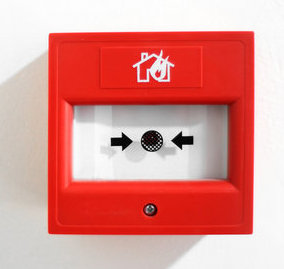
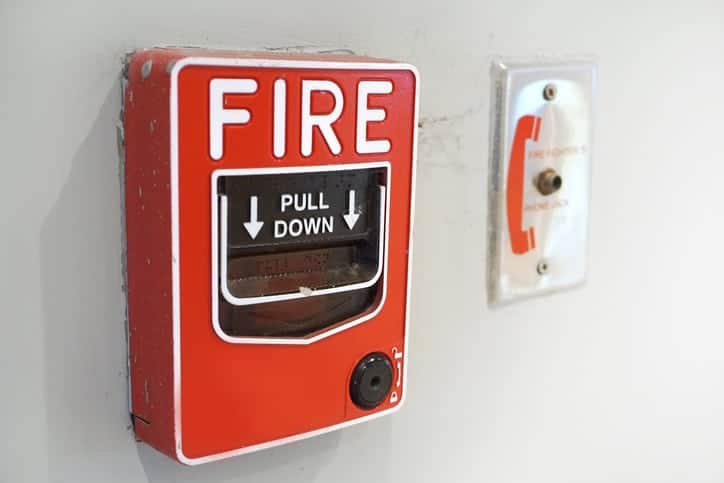
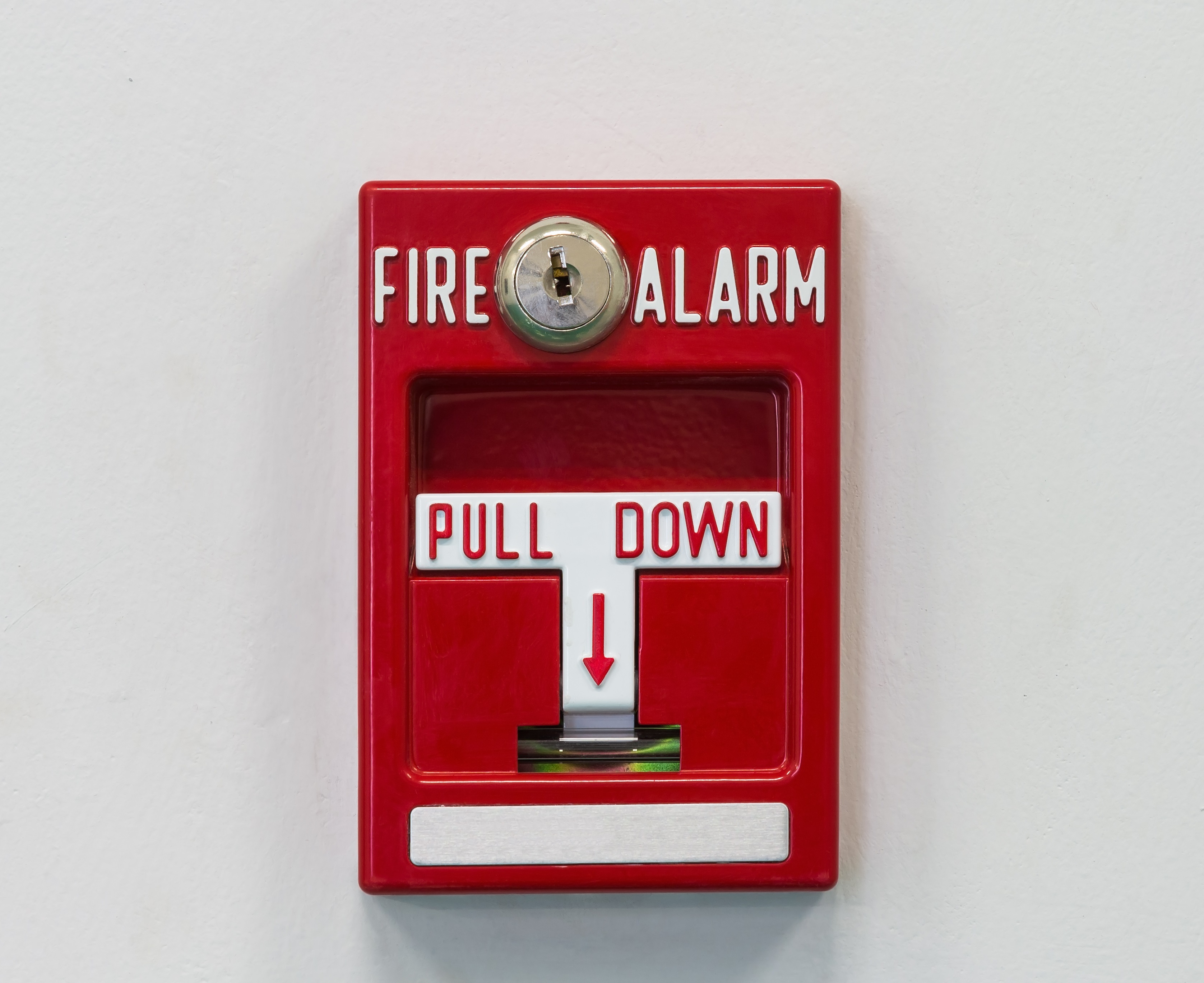
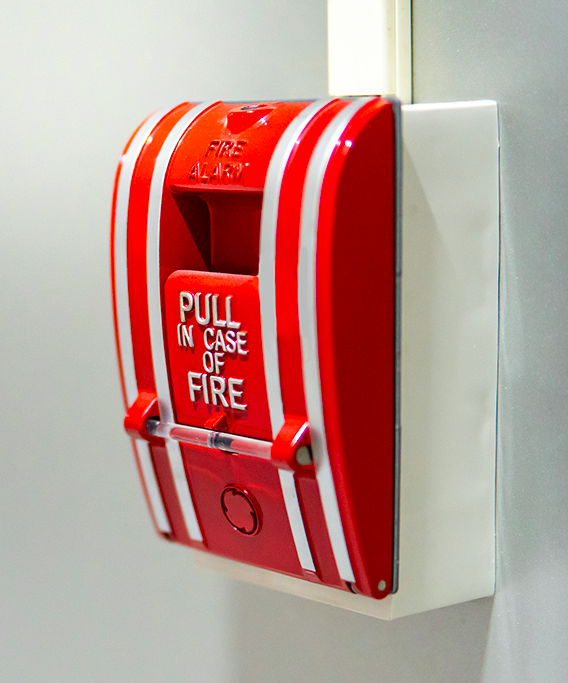
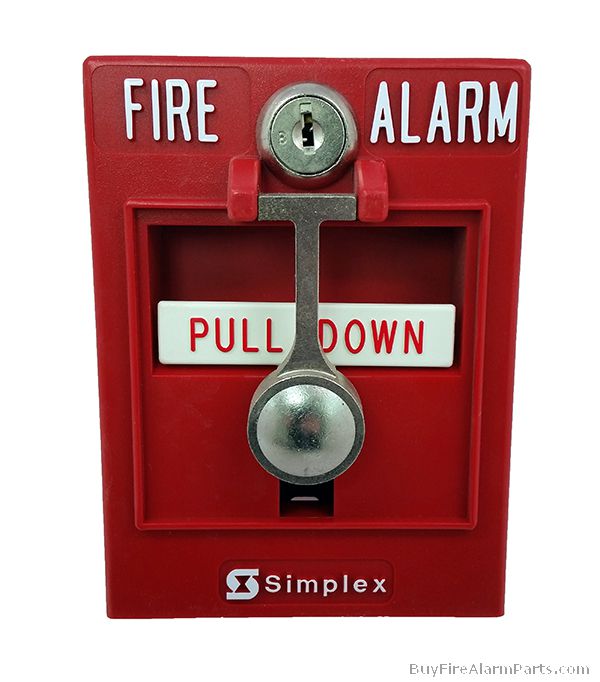



What are key factors to design around?
How do we make an object that is visible, but not overbearing, in a noisy space? How can we make the form reflect the way it’s used for the most intuitive and seamless use process?
How do we make an object that is visible, but not overbearing, in a noisy space? How can we make the form reflect the way it’s used for the most intuitive and seamless use process?




Narrowing down the form
Through sketching and prototyping, I explored different geometries and interactions that would best facilitate the priorities I wanted to focus on.
I had initially bounced back and forth between considering a two-step, such as a push in then slide down, and a one-step, such as just a slide down activation. Due to urgencies of situations relating to the fire alarm though, I decided to design it to be as easily activated as possible. A few accidental activations is a much better option that an alarm that is confusing and hard to operate. This would also help avoid misuse of the object.
Visibility, in both the off, and on states was also a key concern. The form of the alarm should make it’s presence known, and the larger surface area in the final design reflects that. The open top also opens up when the handle is pulled down, creating a red illumination above the object.
Through sketching and prototyping, I explored different geometries and interactions that would best facilitate the priorities I wanted to focus on.
I had initially bounced back and forth between considering a two-step, such as a push in then slide down, and a one-step, such as just a slide down activation. Due to urgencies of situations relating to the fire alarm though, I decided to design it to be as easily activated as possible. A few accidental activations is a much better option that an alarm that is confusing and hard to operate. This would also help avoid misuse of the object.
Visibility, in both the off, and on states was also a key concern. The form of the alarm should make it’s presence known, and the larger surface area in the final design reflects that. The open top also opens up when the handle is pulled down, creating a red illumination above the object.
Creating some rough prototypes
Answering questions about scale and size by making some rought foam models.
Answering questions about scale and size by making some rought foam models.
Manufacturing a working model
3D printing to create the housing for a working model of the alarm
3D printing to create the housing for a working model of the alarm
Working with a simple circuit to prototype what the alarm would look like when pulled.
Lasercut and sandblasted a panel of acrylic to create the backing plate to allow for more light to pass through, and reflect from the top, of the alarm
